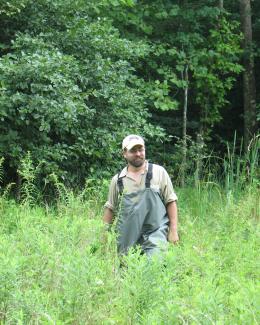Abstract
The objective of this study was to characterize fungal communities in a subsurface environment co-contaminated with uranium and nitrate at the watershed scale, and to determine the potential contribution of fungi to contaminant transformation (nitrate attenuation). The abundance, distribution and diversity of fungi in subsurface groundwater samples were determined using quantitative and semi-quantitative molecular techniques, including quantitative PCR of eukaryotic SSU rRNA genes and pyrosequencing of fungal internal transcribed spacer (ITS) regions. Potential bacterial and fungal denitrification was assessed in sediment-groundwater slurries amended with antimicrobial compounds and in fungal pure cultures isolated from subsurface. Our results demonstrate that subsurface fungal communities are dominated by members of the phylum Ascomycota, and a pronounced shift in fungal community composition occurs across the groundwater pH gradient at the field site, with lower diversity observed under acidic (pH < 4.5) conditions. Fungal isolates recovered from subsurface sediments were shown to reduce nitrate to nitrous oxide, including cultures of the genus Coniochaeta that were detected in abundance in pyrosequence libraries of site groundwater samples. Denitrifying fungal isolates recovered from the site were classified, and found to be distributed broadly within the phylum Ascomycota, and within a single genus within the Basidiomycota. Potential denitrification rate assays with sediment-groundwater slurries showed the potential for subsurface fungi to reduce nitrate to nitrous oxide under in situ acidic pH conditions.



